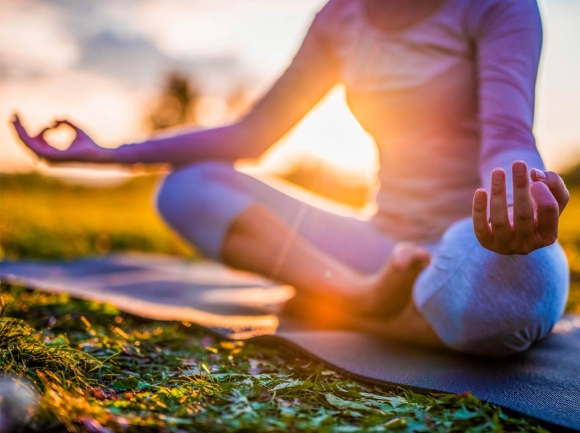Seeing the light amid the darkness

There was once a young girl in Southern India who lived in a house with no electricity. A coiled water hose sat in a corner of the room where she slept. Each night when the sun went down, she convinced herself it was a snake.
In the morning when the sun rose, she would again see it was only a hose. Yet, in the evening when there was no light and she felt slightly different, all she could see was a snake. It did not matter that she knew the object was a hosepipe. There was something about the absence of light that led her to believe differently.
If you’ve been reading my column for any amount of time, you’ve noticed that I’m always in a state of reflection and personal growth. I have a restless spirit. Satiation requires constant learning, changing, evolving. I simply can’t sit in any one place for an extended period, especially if it’s feeing unhealthy or mundane.
Like the young girl in the story, I can allow darkness to overtake the light. Situations, whether personal, societal or global, can feel hopelessly overwhelming. Too much focus on the bad smothers all hope of goodness. This can be frustrating because I know when a person achieves awareness and clarity a sense of calm happiness soon follows. I know this because I’ve felt it.
I’ve found the only way to achieve that type of awareness is through certain intentional practices, such as meditation or mindfulness. Like many people, I once rolled my eyes when well-intentioned friends suggested I meditate. As a busybody, it’s hard for me to sit still, much less meditate. Further, I didn’t buy into the many purported benefits of this ancient practice. It felt impossible that a seemingly easy exercise could cure ailments like anxiety, pain, insomnia and depression.
During the height of the pandemic when home more often and facing significant uncertainty, I decided to meditate for five minutes each morning. At first, even that five minutes was challenging. I found my mind drifting all over the place, thinking about grocery lists and laundry. Nonetheless, when the five minutes concluded, I felt more relaxed and focused. It was many months before I started meditating for longer.
Related Items
While practicing meditation, I also researched the topic. As someone who appreciates factual information and evidence, I wanted to know how and why meditation works. In the simplest of words, meditation works by slowing incoming thoughts to a trickle. It affects the most evolved parts of the human brain such as the frontal lobe, parietal lobe, thalamus and reticular formation by slowing beta waves and calming racing, overwhelming thoughts and stimuli. Moreover, the longer and more often you meditate, the better the results.
Anecdotally, I’ve found several other benefits to meditation. I’m an overthinker and can perseverate on a conversation or situation for entirely too long. Meditating allows me to look beyond individual trees and see the entire forest, offering a more comprehensive, realistic assessment of a situation. Meditation also helps me discern what’s weighing me down the most. Once I get into a calming state, the heaviest things rise to the top. This is beneficial because it shows what parts of my life need problem solving or readjustment. I’ve also found that meditation assists with focus before sitting down to write a long article or stepping into an important meeting or conversation.
Stress, anxiety, pain, poor sleep, inattentiveness and depression have always been part of the human experience so it’s no wonder meditation has stood the test of time. While psychotherapy, pharmaceuticals and other proposed treatments have shifted and changed, meditation has remained unaltered through the ages. There is no need to modify something that works so well.
Similar to meditation is mindfulness. If sitting down to meditate is too farfetched for your daily routine, you can be mindful in any situation. Whether walking your dog, sipping a mug of tea or gardening, focus on how the activity is affecting your senses. Don’t stress over whether you’re doing it correctly. For any type of mindful practice, concentrate on your breath and start with small sessions. Then build from there. There are many resources including books, apps and podcasts to assist you.
On the surface, meditation and mindfulness can look pointless. That’s because the true magic is happening on the inside. The most important component to these practices is heightened awareness. Awareness is clarity and clarity is light. When we rest in awareness, we see more clearly. We can’t unsee what we’ve seen in that light. When we train our minds in awareness and bring that clarity, not only to meditation but also to every moment of our lives, we can enjoy a happier existence and more harmonious experience with the world around us.
(Susanna Shetley is a writer, editor and digital media specialist for The Smoky Mountain News, Smoky Mountain Living and Mountain South Media. This email address is being protected from spambots. You need JavaScript enabled to view it.)









